American Rocket Society| Founded | April 6, 1934 |
|---|
| Dissolved | merged with the Institute of the Aerospace Sciences to become AIAA |
|---|
| Type | Professional Organization |
|---|
| Origins | renamed from American Interplanetary Society (formed April 4, 1930) |
|---|
Members | 21,000 (1959) |
|---|
The American Rocket Society (ARS) began its existence on April 4, 1930, under the name of the American Interplanetary Society. It was founded by science fiction writers G. Edward Pendray, David Lasser, Laurence Manning, and others. [1] Pendray corresponded with Willy Ley of the German rocket society, Verein für Raumschiffahrt, and visited him in 1931. The members originally conducted their own rocket experiments in New York and New Jersey. The society printed its own journal. [3] The AIS did pioneering work in testing the design requirements of liquid-fueled rockets, with a number of successful test launches of ARS rockets occurring in this period and pointing the way to the United States space program. Its name was changed to American Rocket Society on April 6, 1934. [4] In 1936, the American Rocket Society and its member Alfred Africano were awarded the Prix d'Astronautique by the Société astronomique de France (French Astronomical Society) in recognition of their pioneering tests with liquid fueled rockets.
The Journal of the American Rocket Society was published from 1945–53. [5]
Membership increased rapidly in the 1950s as the government funded "upper air research", and by the end of the decade it had reached 21,000. In early 1963, the ARS merged with the Institute of the Aerospace Sciences to become the American Institute of Aeronautics and Astronautics (AIAA).

A hybrid-propellant rocket is a rocket with a rocket motor that uses rocket propellants in two different phases: one solid and the other either gas or liquid. The hybrid rocket concept can be traced back to at least the 1930s.

This article gives a concise timeline of rocket and missile technology.
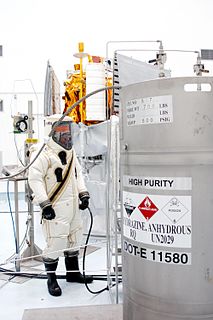
A hypergolic propellant combination used in a rocket engine is one whose components spontaneously ignite when they come into contact with each other.

Robert Hutchings Goddard was an American engineer, professor, physicist, and inventor who is credited with creating and building the world's first liquid-fueled rocket. Goddard successfully launched his rocket on March 16, 1926, ushering in an era of space flight and innovation. He and his team launched 34 rockets between 1926 and 1941, achieving altitudes as high as 2.6 km (1.6 mi) and speeds as fast as 885 km/h (550 mph).

A scramjet is a variant of a ramjet airbreathing jet engine in which combustion takes place in supersonic airflow. As in ramjets, a scramjet relies on high vehicle speed to compress the incoming air forcefully before combustion, but whereas a ramjet decelerates the air to subsonic velocities before combustion, the airflow in a scramjet is supersonic throughout the entire engine. That allows the scramjet to operate efficiently at extremely high speeds.

Max Valier was an Austrian rocketry pioneer. He helped found the German Verein für Raumschiffahrt that would bring together many of the minds that would later make spaceflight a reality in the 20th century.

The American Institute of Aeronautics and Astronautics (AIAA) is a professional society for the field of aerospace engineering. The AIAA is the U.S. representative on the International Astronautical Federation and the International Council of the Aeronautical Sciences. In 2015, it had more than 30,000 members among aerospace professionals worldwide.
Aerojet was an American rocket and missile propulsion manufacturer based primarily in Rancho Cordova, California, with divisions in Redmond, Washington, Orange and Gainesville in Virginia, and Camden, Arkansas. Aerojet was owned by GenCorp. In 2013, Aerojet was merged by GenCorp with the former Pratt & Whitney Rocketdyne to form Aerojet Rocketdyne.
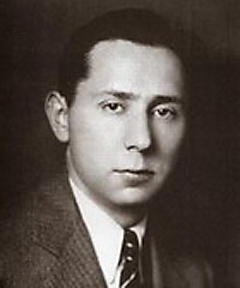
David Lasser was an American writer and political activist. Lasser is remembered as one of the most influential figures of early science fiction writing, working closely with Hugo Gernsback. He was also heavily involved in the workers’ rights struggles of the Great Depression.
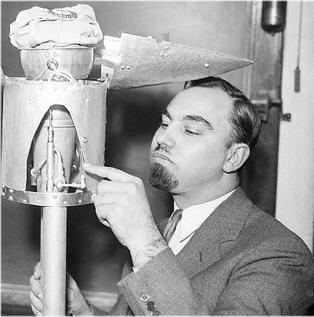
George Edward Pendray was an American public relations counselor, author, foundation executive, and an early advocate of rockets and spaceflight. He was associated with Robert H. Goddard and helped organize the National Aeronautics and Space Administration (NASA). He conceived the idea of a "time capsule" sealed container to preserve current everyday items for future historians and implemented his concept at the 1939 New York World's Fair. Pendray co-founded the American Interplanetary Society.
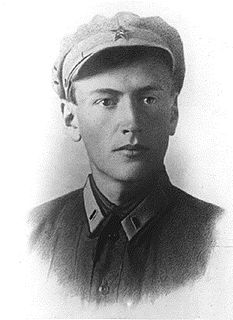
Mikhail Klavdievich Tikhonravov was a Soviet aerospace engineer and scientist who was a pioneer of spacecraft design and rocketry.

The pintle injector is a type of propellant injector for a bipropellant rocket engine. Like any other injector, its purpose is to ensure appropriate flow rate and intermixing of the propellants as they are forcibly injected under high pressure into the combustion chamber, so that an efficient and controlled combustion process can happen.
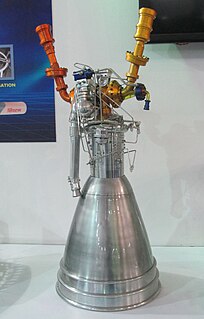
The Vikas is a family of liquid fuelled rocket engines conceptualized and designed by the Liquid Propulsion Systems Centre in the 1970s. The design was based on the licensed version of the Viking engine with the chemical pressurisation system. The early production Vikas engines used some imported French components which were later replaced by domestically produced equivalents. It is used in the Polar Satellite Launch Vehicle (PSLV) and the Geosynchronous Satellite Launch Vehicle (GSLV) series of expendable launch vehicles for space launch use.
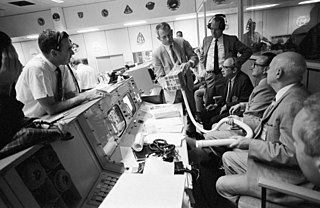
Aerospace engineering is the primary field of engineering concerned with the development of aircraft and spacecraft. It has two major and overlapping branches: aeronautical engineering and astronautical engineering. Avionics engineering is similar, but deals with the electronics side of aerospace engineering.

Reaction Motors, Inc. (RMI) was an early American maker of liquid-fueled rocket engines, located in New Jersey. RMI engines with 6,000 lbf (27 kN) thrust powered the Bell X-1 rocket aircraft that first broke the sound barrier in 1947, and later successors including the X-1A, X1E, and the Douglas D-558-2 Skyrocket. A 20,000 lbf (89 kN) thrust RMI engine also powered the Viking research rocket, the first large liquid-fueled US high-altitude rocket. RMI was merged with Thiokol in 1958, where it produced the XLR-99 engine that powered the X-15 rocket aircraft.

The AIAA Journal is a peer-reviewed scientific journal published monthly by the American Institute of Aeronautics and Astronautics. It covers all areas of aeronautics and astronautics, particularly with respect to new theoretical and experimental developments. The current editor-in-chief is Alexander J. Smits from Princeton University. According to the Journal Citation Reports, its 2014 impact factor is 1.207, ranking it 4th out of 30 journals in the category "Engineering, Aerospace".
A Propulsive Fluid Accumulator is an artificial Earth satellite which collects and stores oxygen and other atmospheric gases for in-situ refuelling of high-thrust rockets. This eliminates the need to lift oxidizer to orbit and therefore brings significant cost benefits. A major portion of the total world payload sent into low earth orbit each year is either liquid oxygen or water.
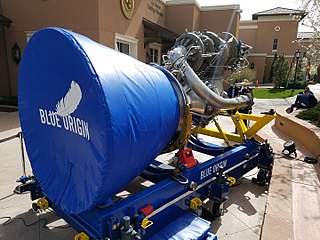
The Blue Engine 4 or BE-4 is an oxygen rich liquefied-natural-gas-fueled staged-combustion rocket engine under development by Blue Origin. The BE-4 is being developed with private and public funding. The engine has been designed to produce 2,400 kilonewtons (550,000 lbf) of thrust at sea level.

Ashwani K. Gupta is a British-American engineer and educator with research focus on combustion, fuels, fuel reforming, advanced diagnostics, High Temperature Air Combustion, and high-intensity distributed combustion, green combustion turbine, micro-combustion, and air pollution. He is an Distinguished University Professor at the University of Maryland. Gupta is also Professor of Mechanical Engineering at the University of Maryland and Director of Combustion Laboratory. He is also an Affiliate Professor at Institute of Physical Science and Technology, University of Maryland which is part of the University of Maryland College of Computer, Mathematical and Natural Sciences.
















